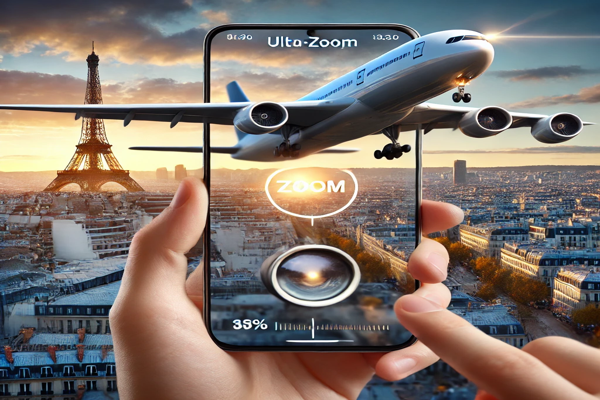Como Recuperar Fotos Excluídas do Google Fotos
Perder acidentalmente fotos em seu celular é um momento angustiante, mas a boa notícia é que existem maneiras eficazes de recuperar suas preciosas memórias.
Neste guia mais abrangente, exploraremos métodos avançados para recuperar fotos excluídas, tanto em dispositivos Android quanto iPhones, elevando sua experiência de recuperação a um nível mais eficiente e denso.
Google Fotos: Uma Ferramenta Poderosa
O Google Fotos oferece uma solução robusta para preservar suas memórias fotográficas. Siga estes passos aprimorados:
Recuperação no Android
- Ativar Sincronização:
- Inicie ativando a opção “Backup e Sincronização” nas configurações do Google Fotos no seu dispositivo Android. Isso garante que suas fotos e vídeos sejam automaticamente armazenados na nuvem.
- Lixeira do Google Fotos:
- Se uma foto for excluída acidentalmente, não entre em pânico. Fotos excluídas com a sincronização ativada são mantidas na lixeira do Google Fotos por 60 dias antes da remoção permanente.
- Recuperação Simples:
- Durante esse período, recupere fotos diretamente pelo aplicativo Google Fotos no seu dispositivo Android.
- Cuidado com a Exclusão:
- Lembre-se de que excluir imagens no Google Fotos reflete no seu telefone. Pratique cautela ao excluir.
- Verificação da Lixeira:
- Antes de recorrer a soluções avançadas, sempre verifique a lixeira do Google Fotos. Suas fotos podem estar lá, aguardando restauração.
Estas etapas simples podem salvar suas fotos preciosas em situações de apuros digitais.
Ferramentas Avançadas para Android
Ao recuperar fotos excluídas de um telefone Android, considere estas opções avançadas:
DiskDigger:
DiskDigger é um software de recuperação de dados que ajuda a recuperar arquivos perdidos ou excluídos de discos rígidos, cartões de memória, unidades flash USB e outros dispositivos de armazenamento. Ele utiliza técnicas avançadas de escaneamento para buscar e recuperar dados perdidos, mesmo após a exclusão acidental.
Existem duas versões principais do DiskDigger: uma gratuita e uma paga. A versão gratuita permite recuperar uma variedade de tipos de arquivos, enquanto a versão paga oferece recursos adicionais e suporte para uma gama mais ampla de formatos de arquivo.
Para utilizar o DiskDigger, você precisa instalar o software no seu computador e selecionar o dispositivo de armazenamento que deseja escanear. O programa então realiza uma varredura profunda em busca de arquivos perdidos, exibindo os resultados para que você possa selecionar quais arquivos deseja recuperar.
Recuva:
Recuva é um programa de recuperação de dados desenvolvido para ajudar a restaurar arquivos excluídos acidentalmente. Ele é projetado para funcionar em discos rígidos, cartões de memória, pen drives e outros dispositivos de armazenamento.
Ao utilizar o Recuva, você pode escanear o dispositivo desejado em busca de arquivos perdidos. O programa oferece a capacidade de recuperar uma variedade de tipos de arquivos, como documentos, imagens, vídeos e muito mais. Além disso, ele permite que você especifique o tipo de arquivo que está procurando, o que pode acelerar o processo de escaneamento.
Recuva possui uma interface amigável que torna o processo de recuperação de dados relativamente simples. Os resultados da varredura são exibidos em uma lista, permitindo que você visualize os arquivos encontrados e selecione aqueles que deseja recuperar.
Dr.Fone:
Dr.Fone é uma suíte de software desenvolvida para ajudar na recuperação de dados, reparo do sistema, transferência de dados e outras funções relacionadas a dispositivos móveis, como smartphones e tablets. Este software é projetado para funcionar em dispositivos iOS e Android.
Uma das principais funcionalidades do Dr.Fone é a recuperação de dados. Ele permite que os usuários recuperem arquivos perdidos devido à exclusão acidental, falha no sistema, atualização do sistema operacional, ou outros motivos. Além disso, o Dr.Fone suporta a recuperação de uma variedade de tipos de dados, como contatos, mensagens, fotos, vídeos, documentos e muito mais.
Além da recuperação de dados, o Dr.Fone também oferece recursos como o reparo do sistema. Isso pode ser útil em situações em que o dispositivo móvel apresenta problemas como travamento, loop de inicialização, ou outros problemas relacionados ao sistema operacional.
PhoneRescue:
O PhoneRescue é uma ferramenta de recuperação de dados projetada para dispositivos iOS e Android. Essa aplicação é desenvolvida pela iMobie e tem como objetivo ajudar os usuários a recuperar dados perdidos ou excluídos de seus dispositivos móveis.
Para dispositivos iOS, o PhoneRescue pode ajudar na recuperação de mensagens, contatos, fotos, vídeos, histórico de chamadas, entre outros tipos de dados perdidos. Ele suporta diferentes tipos de arquivos e oferece várias opções de recuperação para atender às necessidades específicas dos usuários.
Além disso, o PhoneRescue também oferece suporte para dispositivos Android, permitindo a recuperação de mensagens, contatos, fotos, vídeos, documentos e outros tipos de arquivos perdidos. Ele suporta uma ampla variedade de marcas e modelos de dispositivos Android.
Lembre-se de que, ao usar qualquer software de recuperação de dados, é importante seguir as instruções cuidadosamente e garantir que seu dispositivo esteja devidamente conectado e reconhecido pelo programa.
Prevenção é a Melhor Abordagem
Além das estratégias de recuperação, é vital adotar medidas preventivas para evitar futuras perdas de dados:
Faça Backup Regularmente
Fazer backup regular de suas fotos e arquivos é uma prática fundamental. Utilize serviços de armazenamento em nuvem ou dispositivos externos para garantir a segurança de suas memórias.
Utilize Recursos de Organização
O Google Fotos oferece recursos de organização poderosos. Utilize álbuns e marcadores para classificar suas fotos, tornando mais fácil localizar e recuperar imagens, mesmo após exclusões acidentais.
Conscientização ao Excluir
Ao deletar fotos, seja consciente das implicações. Lembre-se de que a exclusão no Google Fotos reflete diretamente em seu dispositivo. Uma abordagem cuidadosa pode evitar dores de cabeça futuras.
A Busca Pela Recuperação Ideal
Entender a natureza das ferramentas de recuperação disponíveis é crucial. Considere as características de cada programa e escolha aquele que atenda melhor às suas necessidades. Além das ferramentas mencionadas, explore constantemente novas opções no mercado para garantir a eficácia do processo de recuperação.
Conclusão
Com estas estratégias avançadas, você está equipado para enfrentar desafios de recuperação de fotos excluídas. Lembre-se sempre de agir rapidamente, escolher ferramentas confiáveis e, acima de tudo, adotar uma abordagem preventiva para preservar suas memórias digitais. Com paciência e as ferramentas certas, suas fotos estarão de volta para contar suas histórias.






